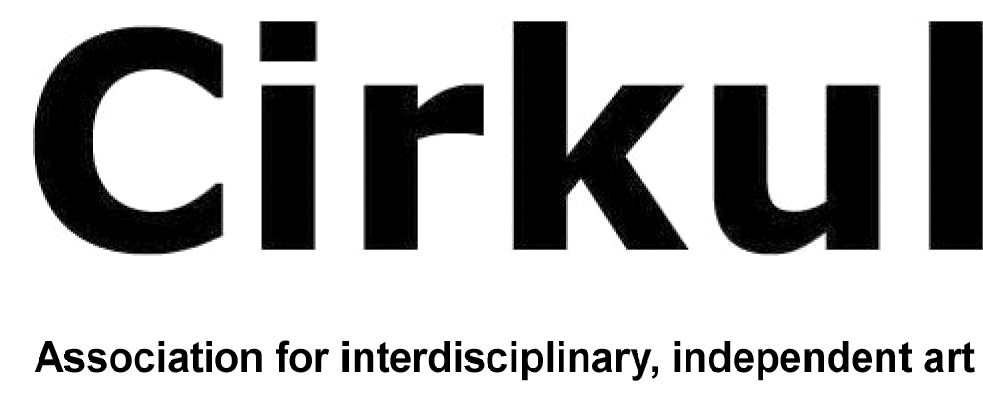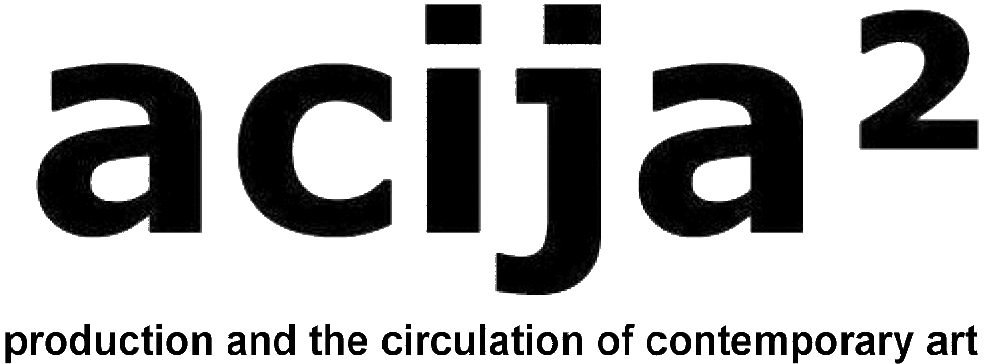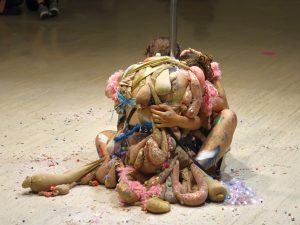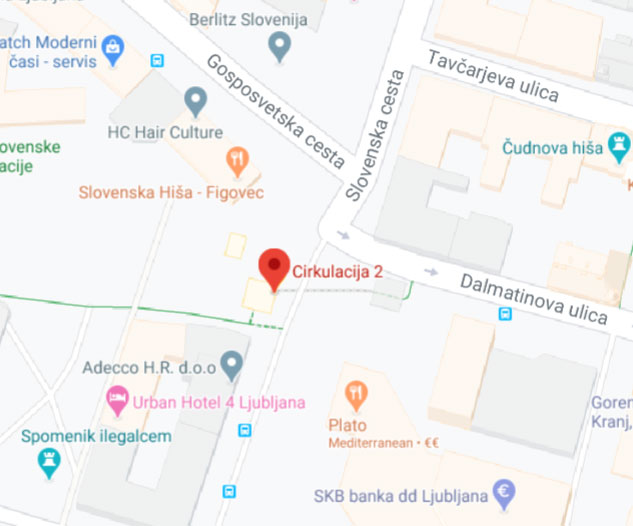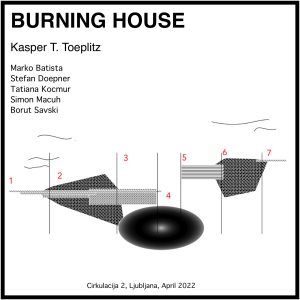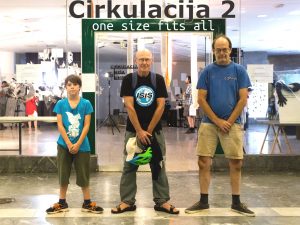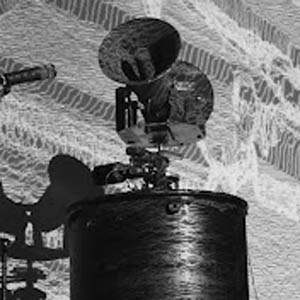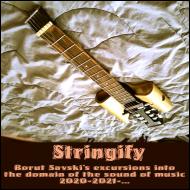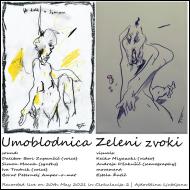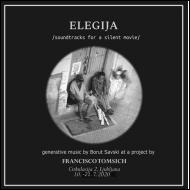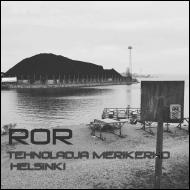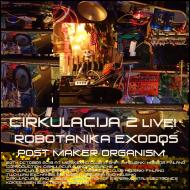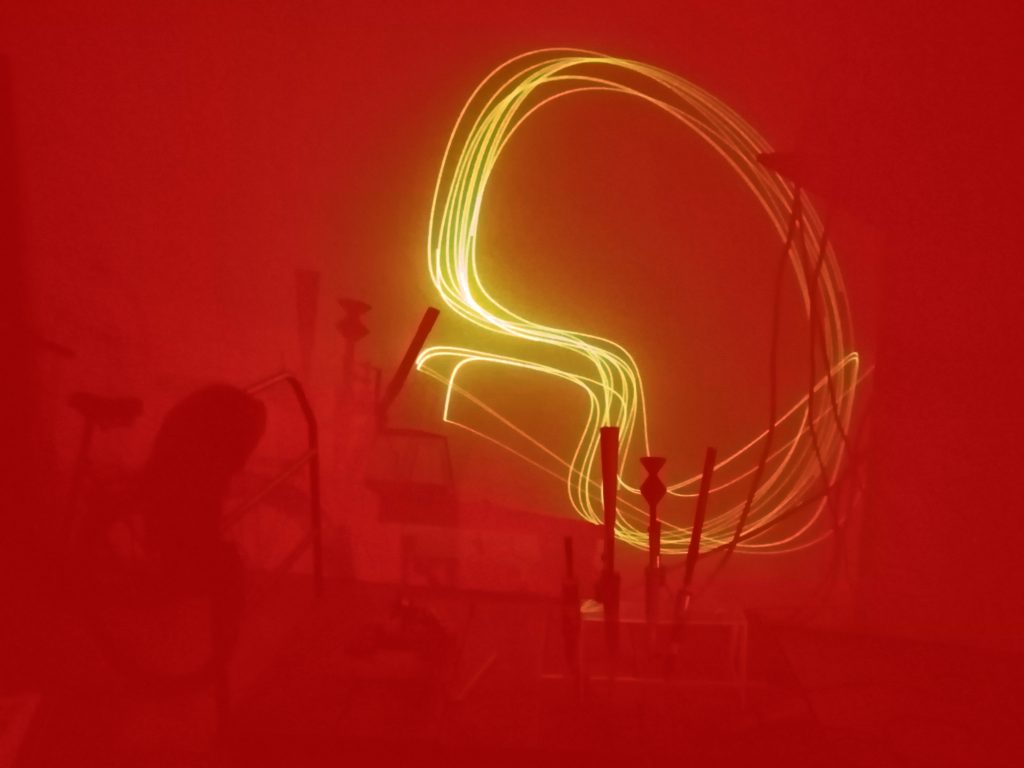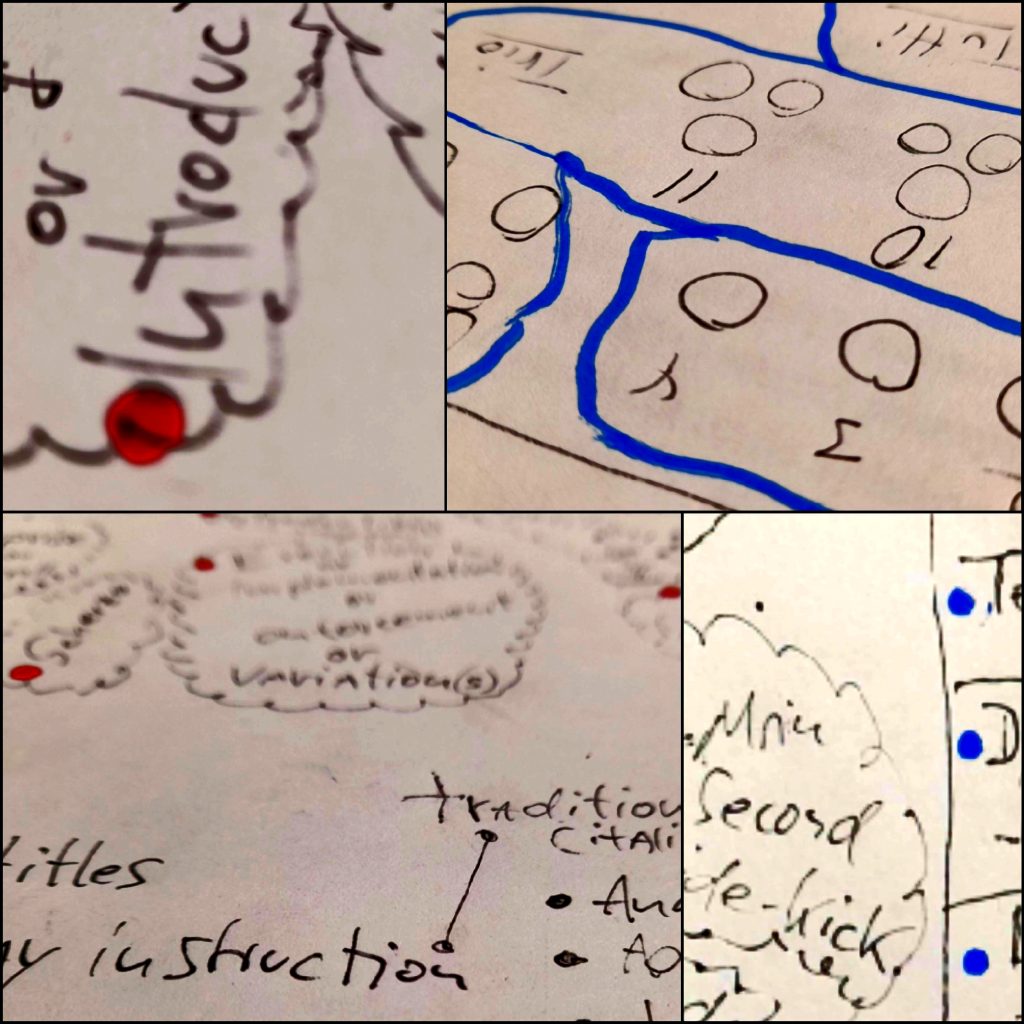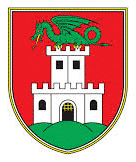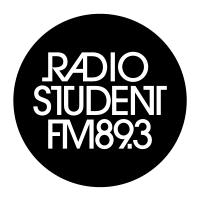BIG BANG vs STRING THEORY / big-bend Cirkulacija 2
Published on October 25th, 2022[lang_si]Petek, 28. oktober 2022 ob 20.00:
BIG BANG vs STRING THEORY
Ronald Gonko, Robert Lisek, Stefan Doepner, Borut Savski
Ronald Gonko predlaga:
Simulacijo s pomočjo skupine štirih performativnih umetnikov ali umetnikov s področja računalniških umetnosti, video umetnosti, ali skladatelji računalniške glasbe – in bi se kot taki vključili v skupinski živi performens.
Osnovna tenzija koncepta se nanaša na Baudrilliardovo besedilo “Simulaker in Simulacija | Simulacra and Simulation” (1981), v katere Jean Baudrillard zastavi: “Simulaker ni nikoli tisto, kar prikriva resnico – to je resnica, ki skriva, da je ni. Simulaker je res”. Besedilo se nanaša na vprašanje, kaj je realnost – še posebej v svetu elektronskih in digitalnih naprav – ki proizvajajo podobe – “sence”.
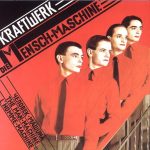 KRAFTWERK (nemški elektronski pop bend) so se v nekaterih svojih nastopih in intervjujih po izidu albuma „Mensch-maschine“ (1978) pojavljali napravljeni kot nežive lutke, da bi do absurda zmanjšali pomen njihovih osebnosti v vlogi pop zvezdnikov.
KRAFTWERK (nemški elektronski pop bend) so se v nekaterih svojih nastopih in intervjujih po izidu albuma „Mensch-maschine“ (1978) pojavljali napravljeni kot nežive lutke, da bi do absurda zmanjšali pomen njihovih osebnosti v vlogi pop zvezdnikov.
Big Bang se asociativno/ besedoklepsko nanaša na big-bend, saj je avtor v osnovi glasbenik. Njegova osnovna želja je na enem mestu zbrati veliko glasbenikov, ki bi prešli trenutno izjemno razširjeno – a zelo reducirano situacijo – prakso eksperimentalnih solo in duo performensov. Ti se vodijo kot osebne umetniške ekspresije. Tudi javne predstavitve teh projektov potekajo na način umetniških predstavitev (in ne glasbenih). Avtor takšno prakso postavlja pod vprašaj, saj na drugi strani skrajne individualizacije obstaja segment človeškosti, ki se mu reče kolektivna pripadnost, ki ni le negativna, ampak ima v prenešenih pomenih širše dimenzije: posamezno je le del celote – človek pripada družbi, človek kot družbeno bitje. Fiziološka podstat obstaja – reče se ji empatija. Pripadnost človeški vrsti. Civilizacija tudi ni konstrukt individualnosti – prej je tako skrajno atomizirani individuum (-> davkoplačevalec) civilizacijski konstrukt.
Ronald Gonko kot vodja kar nekaj številčno močnih skupinskih glasbenih projektov se bolj kot kdo drug zaveda možnosti kohezivnega kolektivnega glasbenega telesa. Opisuje stanje duha, ko takšno izvajalsko telo dosega umetniške presežke. Pri tem omenja čisto fizično-psihološke aspekte.
Simulacija BIG-BANG performensa v izvedbi “big-benda” bi torej morala biti “večja” – oziroma bi morala na nek preseči “veličino” svojih sestavnih delov – članov. To bi se lahko multipliciralo z dodanimi izvajalci – računalniki, povezanimi v skupino s pomočjo programiranih nevronskih mrež. Umetna inteligenca, ki prav tako prispeva k “odtujitvi” – če odtujitev razumemo kot odmik rezultata od posameznikovega dejanja/ hotenja.
Ronald Gonko je glasbenik in umetnik zvoka iz Berlina s poudarjeno eklektičnimi stili – v obliki eksperimentalne elektronike sta bila to Berlin Synthesizer Orchestra in anti-elektro Stop Disco Mafia – pa do akustičnih izrazov v skupinah, kot so Kapaikos (Polka-Punk, PP) in Mariahilff (obskurne kantavtorske stvari). V solističnih nastopih raziskuje meje med resnim umetniškim pristopom in nesmiselnim neo-dada zvokom z uporabo zvočnih naprav za obdelavo signalov, lo-fi elektroniko, najdenimi zvočnimi artefakti/ zvočili – ter lonci, ponvami in klobukom podobnimi gongi. V skupinskih nastopih deluje drugače: ne glede na stil, preferira visoko izurjenost skupine, saj edino na ta način nastopi trenutek kolektivnega zavednega – na račun individualnega nezavednega.
https://soundcloud.com/rgonko
Robert B. Lisek je umetnik, matematik in skladatelj, ki se osredotoča na sisteme, omrežja in procese (računalniške, biološke, družbene). Sodeluje pri številnih projektih, ki se osredotočajo na medijsko umetnost, kreativno pripovedovanje in interaktivno umetnost. Njegovo delo, ki se opira na postkonceptualno umetnost, umetnost programske opreme in metamedije, namerno kljubuje kategorizaciji. Lisek je pionir umetnosti, ki temelji na umetni inteligenci in strojnem učenju. Lisek je tudi skladatelj sodobne glasbe, avtor številnih projektov in partitur na presečišču spektralne, stohastične, konkretne glasbe, musica futurista in noisea. Je avtor 300 razstav in predstavitev, med drugim: SIBYL – ZKM Karlsruhe; SIBYL II – IRCAM Center Pompidou; QUANTUM ENIGMA – Harvestworks Center New York in STEIM Amsterdam; TERROR ENGINES – WORM Center Rotterdam, Secure Insecurity – ISEA Istanbul; DEMONS – Beneški bienale (spremljevalni dogodki); Manifest proti Manifestu – grad sodobne umetnosti Ujazdowski, Varšava; NEST – ARCO Art Fair, Madrid; Float – kulturni svet spodnjega Manhattna, NYC; WWAI – Siggraph, Los Angeles.
https://lisek.bandcamp.com/
Stefan Doepner, rojen 1966 v Bremnu (Nemčija). Študiral likovno umetnost in interaktivno televizijo na likovni akademiji v Bremnu (1991/1996). Med drugim je soustanovitelj inštituta f18 (1996), KUD-a Obrat (2006, Ljubljana) in Cirkulacije 2 (2007, Ljubljana). Med reference šteje zvočno oblikovanje za Stelarca – Motion Prosthesis in Exoskeleton, 1998 – 2014; od 2012 je član glasbene skupina 300.000 V.K., glasbena spremljava za predstavo Črna magija – Bela tehnika V. Repnika, I. Štromajerja, R. Klančnika na EPK Velenje; sodelovanje pri projektu Platforma za totalno umetnost; mednarodni mini festival Cirkulacija 2: Zvok organizma – organizem zvoka v galeriji Aksioma; sodelovanje na festivalu Speculum Artium 2013, DDT Trbovlje; 2014 Jedinica_Jedan vol.2, in 300.000 V.K. Instalacija, skupinska razstava Kozmos, Mestna galerija, Ljubljana; gostovanje na Steirischer Herbst 2017 kot del projekta „The Sound of the Internet of Things“. V letu 2019 sodelovanje pri projektu Cirkulacija 2: Kakofonija-kakovizija v Osmi/zi Ljubljana. Itd.
http://www.f18institut.org/
Borut Savski, rojen 1960 v Ljubljani je intermedijski umetnik, skladatelj in producent, ki daje velik poudarek zvoku – ob sočasni uporabi tehničnih rešitev za nevsakdanje instrumente in avtonomne zvočne in vizualne strukture/ skulpture. S tem so tesno povezane mikrosocialne situacije, v katere vstopa in/ali jih kreira. Med leti 1979-1984 študij elektronike na Fakulteti za elektrotehniko. Med leti 1993 in 1997 redno zaposlen na Radiu Študent kot vodja organizacije in izvedbe programa. Po letu 1997 skrbnik iniciative Ministrstvo za eksperiment na Radiu Študent, ustanovljene za raziskovanje in uporabo novih medijev. Od leta 2004 samozaposlen v kulturi. Različna in številna sodelovanja, organizacije in soorganizacije dogodkov/ festivalov. Ogromno dela v programu Cirkulacije 2, kjer se udejanja koncept sodelovalne raziskovalne in eksperimentalne umetnosti in predvsem post-disciplinarne umetnosti – ko umetniki suvereno posegajo in družijo vse sfere umetnosti in v družbeno-angažirano situacijo.
http://www.ljudmila.org/~savskib/
[lang_en]Friday, October 28, 2022 at 8:00 p.m.:
BIG BANG vs STRING THEORY
Ronald Gonko, Robert Lisek, Stefan Doepner, Borut Savski
Ronald Gonko suggests:
A simulation with the help of a group of four performative artists or artists from the field of computer art, video art, or computer music composers – and as such involved in a group live performance.
The basic tension of the concept refers to Baudrillard’s text “Simulaker and Simulacija | Simulacra and Simulation” (1981), in which Jean Baudrillard states: “The simulacrum is never that which conceals the truth – it is the truth that conceals its absence. The simulator is real”. The text refers to the question of what reality is – especially in the world of electronic and digital devices – which produce images – “shadows”.
 KRAFTWERK (a German electronic pop band) appeared in some of their performances and interviews after the release of the album “Mensch-maschine” (1978) made up as inanimate dolls in order to reduce the importance of their personalities as pop stars to the point of absurdity.
KRAFTWERK (a German electronic pop band) appeared in some of their performances and interviews after the release of the album “Mensch-maschine” (1978) made up as inanimate dolls in order to reduce the importance of their personalities as pop stars to the point of absurdity.
Big Bang refers to big-band, since the author is basically a musician. His basic desire is to gather in one place many musicians who would transcend the currently extremely widespread – but very reduced situation – the practice of experimental solo and duo performances. These are managed as personal artistic expressions. The public presentations of these projects also take the form of artistic (and not musical) presentations. The author questions this practice, because on the other side of extreme individualization there is a segment of humanity called collective identity, which is not only negative, but has wider dimensions in figurative meanings: the individual is only a part of the whole – human belongs to society, human as a social creature. There is a physiological basis – it is called empathy. Belonging to the human species. Civilization is also not a construct of individuality – rather, such an extremely atomized individual (-> tax payer) is a construct of civilization.
Ronald Gonko, as the leader of several numerically strong group music projects, is more than anyone else aware of the possibility of a cohesive collective musical body. He describes the state of mind when such performing body achieves artistic heights. He refers to purely physical and psychological aspects.
The BIG-BANG performance simulation by the “big-band” should therefore be “bigger” than individual – or rather, it should exceed the “greatness” of its constituent parts – the band members. This could also be realized with the addition of live video and light projections from an array of portable computers connected in a cluster using programmed neural networks. Artificial intelligence, which also contributes to “alienation” – if alienation is understood as a deviation of the result from the individual’s action/will.
Ronald Gonko is a musician and sound artist from Berlin with an emphasis on eclectic styles. In the form of experimental electronic music Berlin Synthesizer Orchestra, anti-electro Stop Disco Mafia – and to acoustic expressions in bands like Kapaikos (Polka-Punk, PP) and Mariahilff (obscure singer-songwriter stuff). In solo performances, he explores the boundaries between a serious artistic approach and a no-nonsense neo-dada sound using audio signal processing devices, lo-fi electronics, found sound artefacts/ soundscapes – and pots, pans and hat-like gongs. In group performances, he works differently: regardless of the style, he prefers the high training of the group, because this is the only way a moment of collective consciousness occurs – at the expense of the individual unconscious.
https://soundcloud.com/rgonko
Robert B. Lisek is an artist, mathematician and composer who focuses on systems, networks and processes (computational, biological, social). He works on many projects focusing on media art, creative storytelling and interactive art. His work which draws on post-conceptual art, software art and metamedia, deliberately defies categorisation. Lisek is a pioneer art based on artificial intelligence and machine learning. Lisek is also a composer of contemporary music, the author of numerous projects and scores on at the intersection of spectral, stochastic, concrete music, musica futurista and noise. He is the author of 300 exhibitions and presentations, including others: SIBYL – ZKM Karlsruhe; SIBYL II – IRCAM Center Pompidou; QUANTUM ENIGMA – Harvestworks Center New York and STEIM Amsterdam; TERROR ENGINES – WORM Center Rotterdam, Secure Insecurity – ISEA Istanbul; DEMONS – Venice Biennale (accompanying events); Manifesto vs. Manifesto – Ujazdowski Castle of Contemporary Art, Warsaw; NEST – ARCO Art Fair, Madrid; Float – cultural world Lower Manhattan, NYC; WWAI – Siggraph, Los Angeles.
https://lisek.bandcamp.com/
Stefan Doepner, born in 1966 in Bremen (Germany). Studied fine arts and interactive television at the Fine Arts Academy in Bremen (1991/1996). Among other things, he is the co-founder of the f18 institute (1996), KUD Obrat (2006, Ljubljana) and Cirkulacija 2 (2007, Ljubljana). References include sound design for Stelarc – Motion Prosthesis and Exoskeleton, 1998 – 2014; since 2012 he has been a member of the music group 300,000 V.K., musical accompaniment for the play Black magic – White technique by V. Repnik, I. Štromajer, R. Klančnik at EPK Velenje; participation in the project Platform for Total Art; international mini-festival Cirkulacija 2: The sound of the organism – the organism of sound in the Aksioma gallery; participation in the Speculum Artium 2013 festival, DDT Trbovlje; 2014 Jedinica_Jedan vol.2, and 300,000 V.K. Installation, group exhibition Kozmos, City Gallery, Ljubljana; hosting Steirischer Herbst 2017 as part of the project “The Sound of the Internet of Things”. In 2019, participation in the project Cirkulacija 2: Cacophony-cacovision in Osmoza Ljubljana. Etc.
http://www.f18institut.org/
Borut Savski, born in 1960 in Ljubljana, is an intermedia artist, composer and producer who places great emphasis on sound – while simultaneously using technical solutions for unusual instruments and autonomous sound and visual structures/sculptures. Closely related to this are the microsocial situations he enters and/or creates. Between 1979 and 1984 he studied electronics at the Faculty of Electrical Engineering. Between 1993 and 1997, he worked regularly at Radio Študent as the head of program organization and implementation. After 1997, administrator of the Ministry of Experiment initiative at Radio Študent, established for research and use of new media. Self-employed in culture since 2004. Various and numerous collaborations, organizations and co-organizations of events/festivals. He works a lot in the Circulation 2 program, where the concept of collaborative research and experimental art and especially post-disciplinary art is implemented – when artists sovereignly intervene and associate all spheres of art and in a socially engaged situation.
http://www.ljudmila.org/~savskib/
